Chasing the Golden Glow

As seen in Bush Journal, Volume 05
The first time I meet Rob Porteous at work, I don’t have to travel far – just a two-minute drive up our property’s laneway. I arrive in what we call ‘ironbark paddock’, which has an undulating rise with a mixture of gravel at the top of the hill and perennial pastures at the base. There’s a dam nearby and surrounding the boundary is a forest of eucalyptus sideroxylon – better known as mugga or ironbark. To us, it’s a small paddock we usually reserve for sheep making their way towards the yards. To Rob, it’s a beekeeper’s dream.
It’s sunrise: 6:30 am on a Thursday in April. I’m standing at the top of ironbark paddock watching Rob tend to his bees, and I’m wearing a hot pink beekeeping suit. Rob loaned it to me, and I’m quite relieved he did as thousands of bees begin to stir within their homely hive that he’s just opened. He’s harvesting the honey these precious insects have been tending to for countless hours, days and weeks.
“It’s always best to undertake this part of the harvesting process in the morning,” Rob says. “Seeing as it’s still slightly cool it’ll take them longer to wake up.”
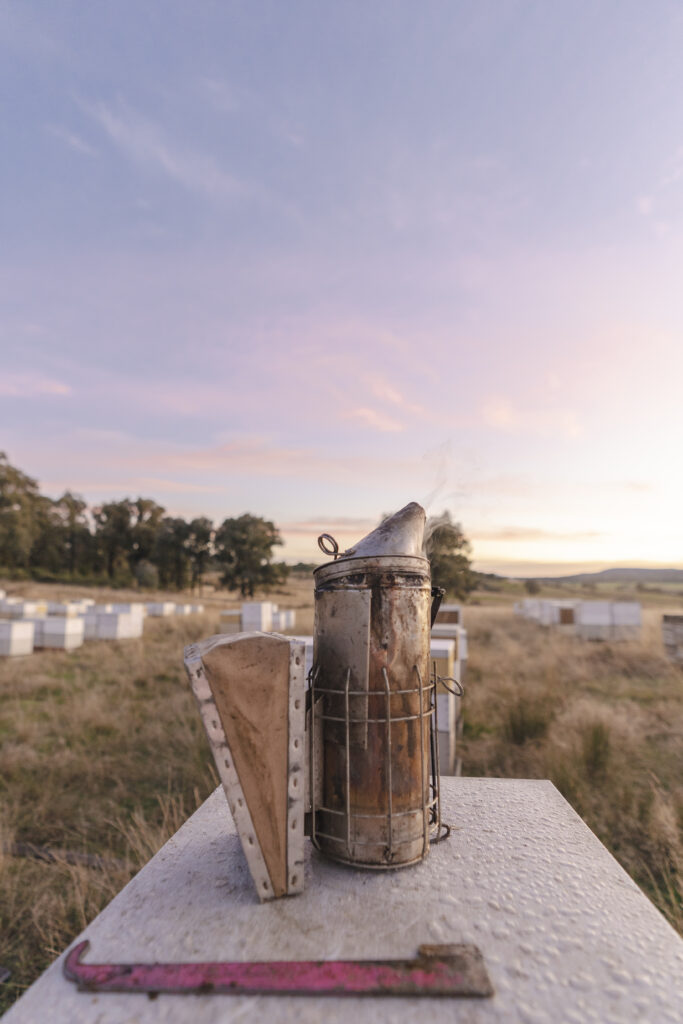
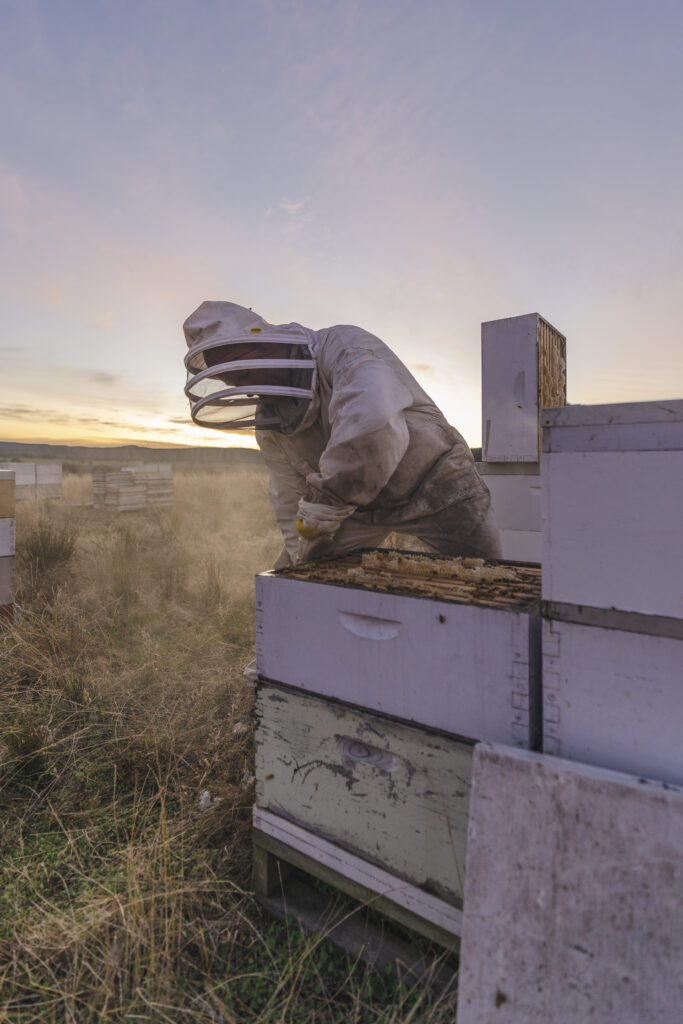
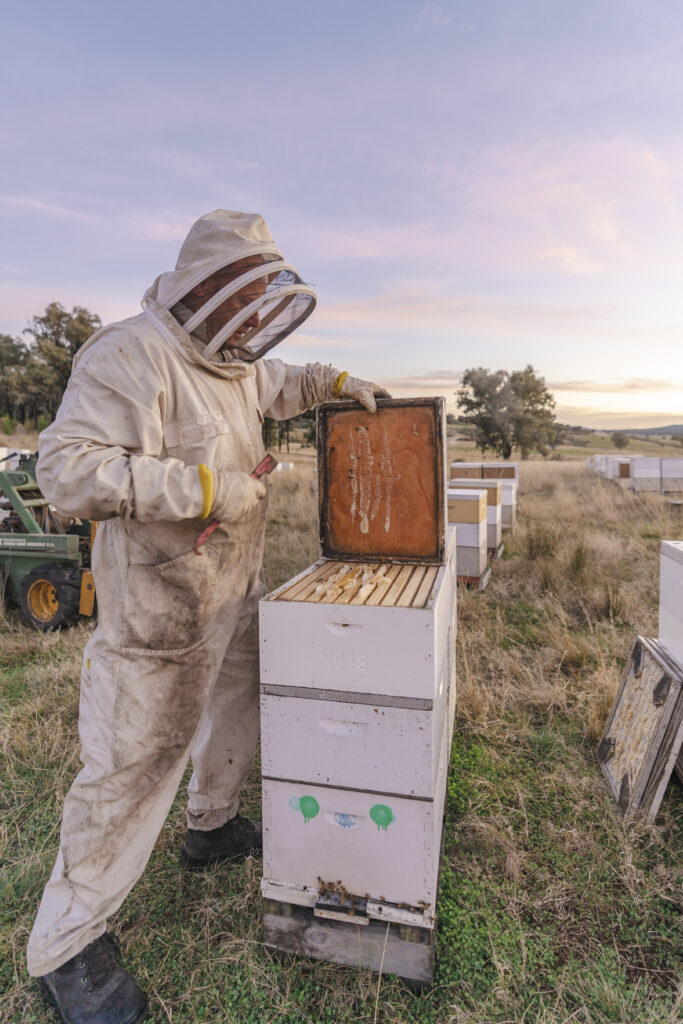
My husband Alex and I live on a sheep and grazing property 4.5 hours south west of Sydney near the town of Grenfell on Wiradjuri Land. We first met Rob in early 2021, after he heard on the grapevine our place was dotted with ironbark forests. Rob cares for more than 500 beehives as part of his business Sunnyside Apiaries. After several years of severe drought, a devastating bushfire that tore through his hometown of Bilpin in the Blue Mountains, then a remarkable year of wet weather, he was on a mission to find a temporary dwelling for his bees, so they could partake in the mass synchronous flowering of ironbark trees.
Eucalyptus sideroxylon is a native tree endemic to eastern Australia. It has dark, rough and deeply-furrowed bark with blue-grey mixed leaves, and clusters of pink, red or white blossoms that make it an important source of pollen and nectar for bees. As the summer season moves into the cooler months of the year, other nectar sources dwindle, but the ironbark blossom is just starting to appear.
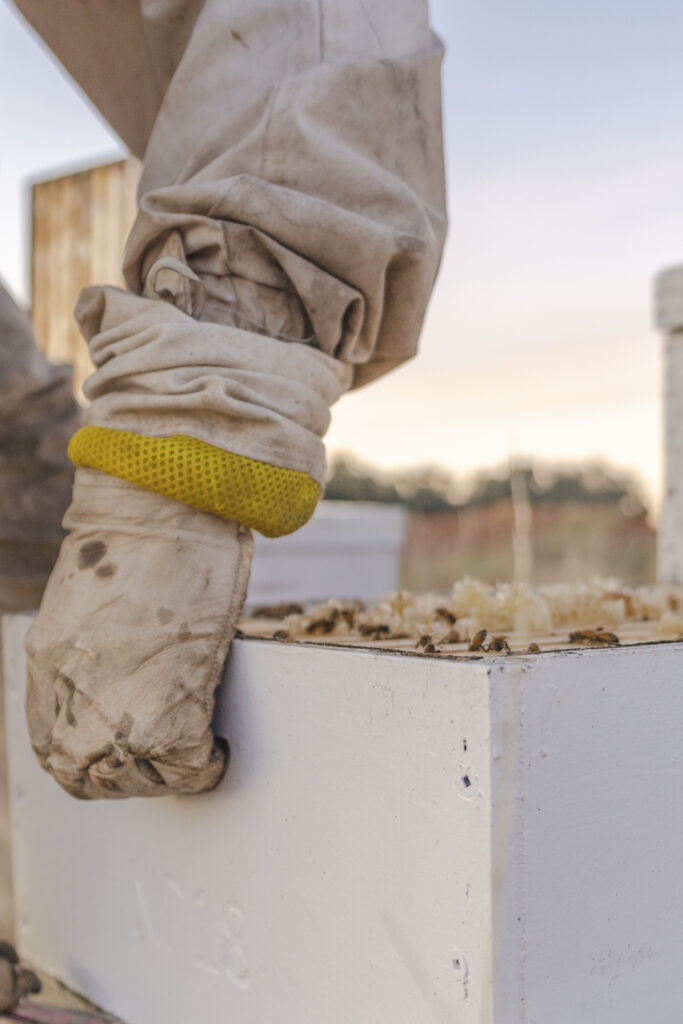

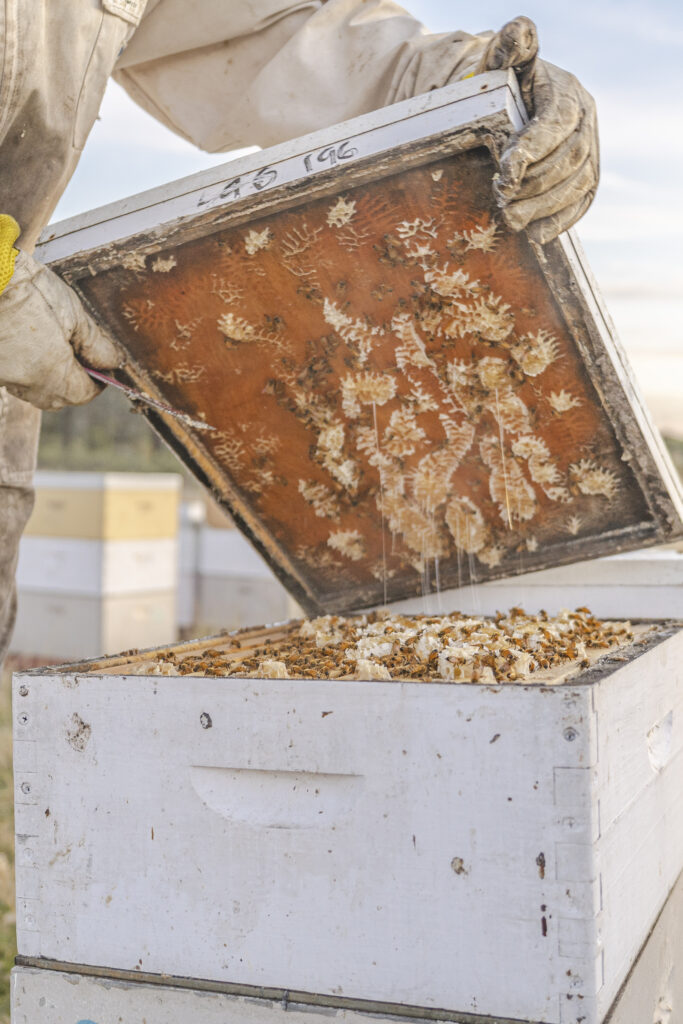
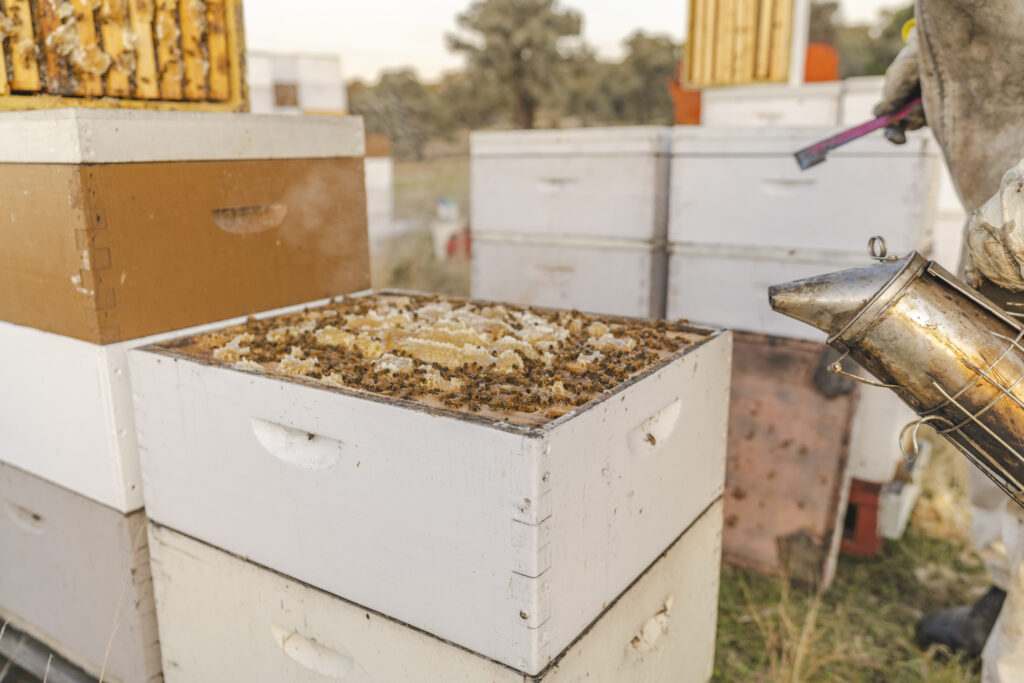
Ironbark is a favourite among beekeepers. Honey made from its blossom has a beautiful scent, with a taste milder than that from leatherwood or red gum. In a regular season, ironbarks flower every three to five years. But, with back-to-back La Niñas, the trees have blossomed for the second year in a row. You’d think this is a good thing, but, with a third La Niña confirmed for this summer, Rob is worried for his bees.
“During the first La Niña the bees did really well. The honey yield was great. This time round, it wasn’t as successful.
“Rain’s good but once the flowering event happens and you’re receiving continuous rainfall events, the blossoms turn to mush.”
And that’s not the only problem. Bees won’t venture out in the rain, preferring to stay in the hive where it’s warm and dry. Rain leads to a decrease in honey and brood (baby bees) production and an increase in the risk of chalkbrood – a disease caused by the amount of moisture in the air.
Rob’s bees are a mixture of two European species – the Italian and Carniolan bees. They’re known to be great honey producers and are adaptable to various climates. But like any living organism, they need the sun to thrive.
“It’s just not good for them long term to be so wet all the time,” Rob says. “Young bees need the sun to practice flying. When they’re first building up their strength, they’ll hover just outside and rest on the external hive walls to soak up the sun’s rays.”
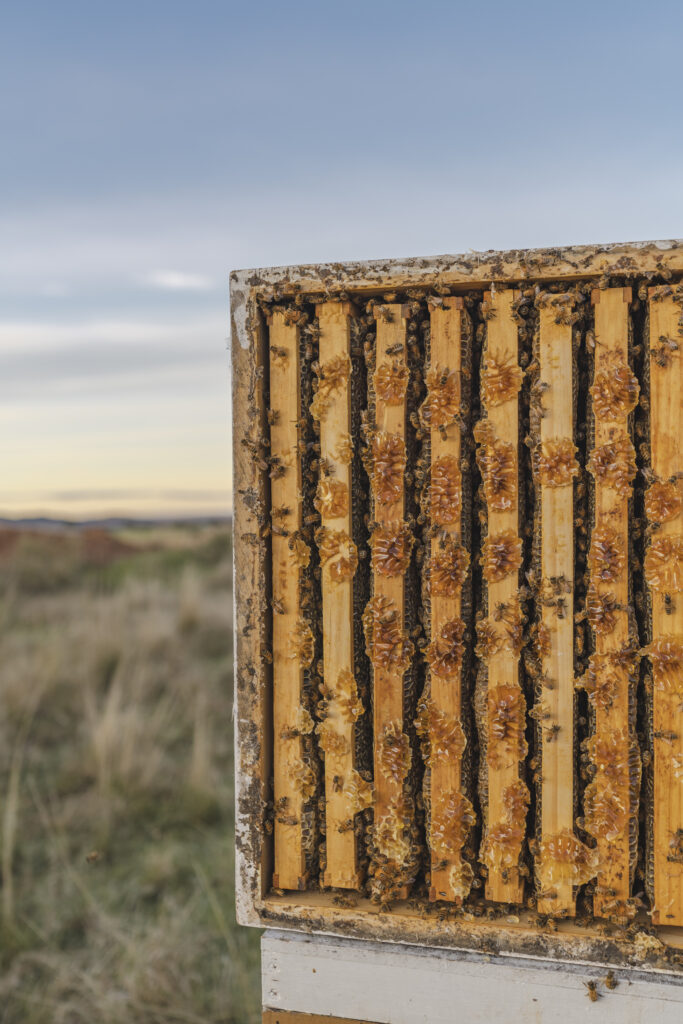
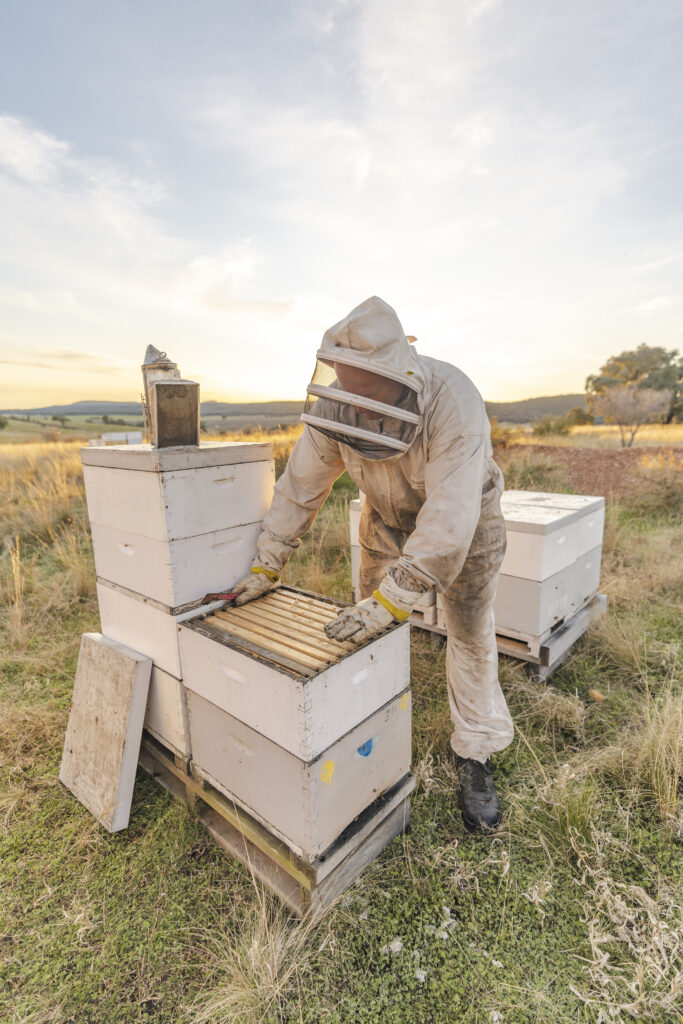
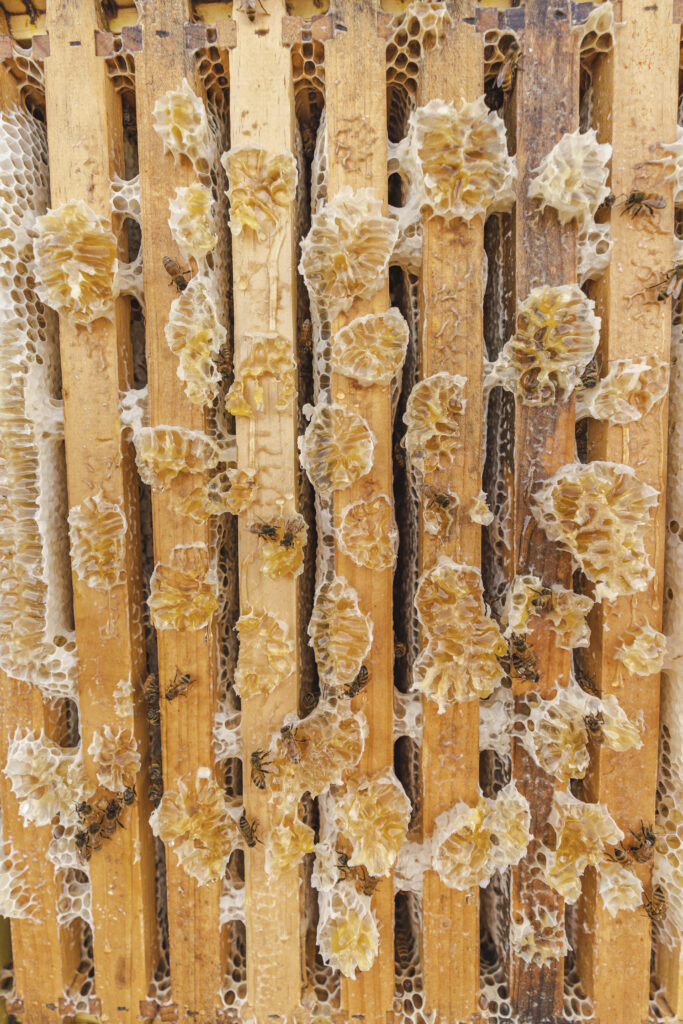
Rob can tell straight away when his bees are in trouble, by watching the queen bee. “She’ll stop laying and this is a tell-tale sign that the hive is struggling,” he says. “At a later stage, if you leave it any longer, the numbers will dwindle.”
I ask Rob what the ideal year is for a beekeeper to have high honey yields, high brood production and happy bees.
“You want good rain leading up to the budding of trees, but no rain once they’re flowering. In the perfect bee world, I’d have rain all winter, then warm dry springs and summers.”
Back on the hill in ironbark paddock – in my hot pink beekeeper’s suit – and it’s almost 7:00 am. I’m becoming more aware of the chorus of low vibrating hums emitting from the hives that surround me. They grow louder as the sun continues to rise. Rob pulls a frame out from the hive and sits it on top of the box. The frame is a mass of soft, pliable honeycomb. It’s the colour of gold.
For honey to be harvestable, the moisture content needs to be below 21%. This percentage is also reliant on the weather.
“When it comes time to harvest the honey, one of the first assessments I do is check the moisture content of the honey within each frame,” says Rob. “If I take it off when there’s too much moisture in it still, the honey ferments.”
There’s a preciseness needed for beekeeping at odds with how Rob ended up becoming a beekeeper. “I was working as a contract builder on a house in Wagga and wasn’t enjoying it,” he says. “Suddenly, this swarm of wild bees came into the backyard of the house I was working on and landed on a shrub.” He coerced them into a cardboard box dotted with a few air-holes – and his beekeeping journey began. “I got stung a lot,” he admits. “But I never gave up. I think that initial swarm of bees which landed on the building site was my calling.”
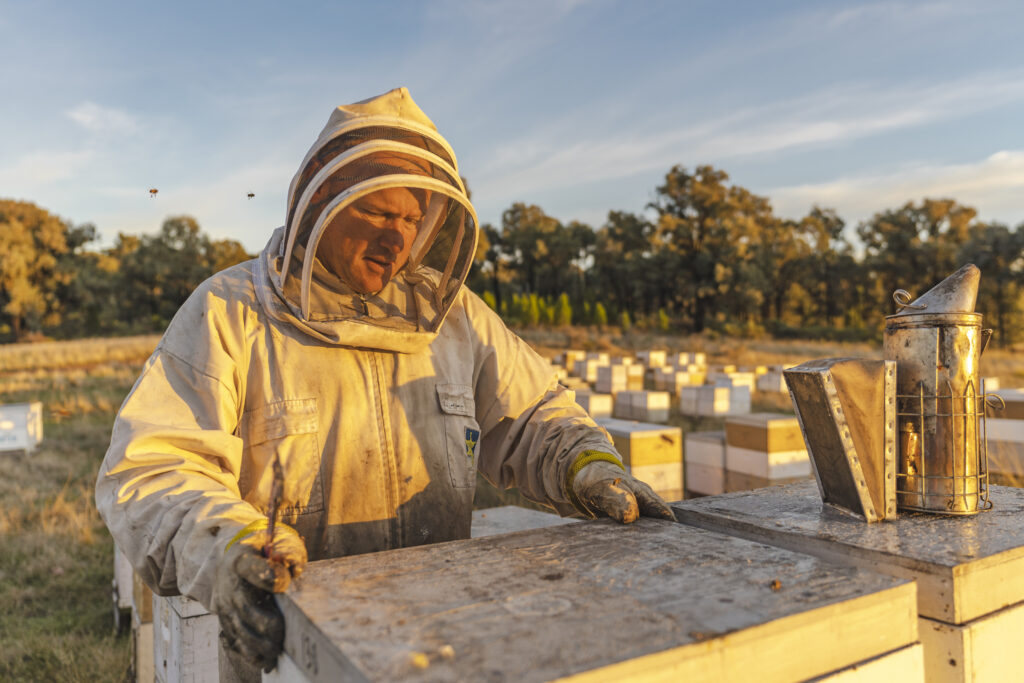
Rob completes the harvesting process at his Bilpin residence and workshop. From our home, that’s a three-hour journey. But we’re not the only property owners who have a symbiotic relationship with Rob and his bees. He also travels to Bathurst, Quirindi, Branxton and Lochinvar where he has beehives nestled among other types of flowering ground and tree flora. He’s on the road nearly every week: tending to his bees, moving hives, harvesting honey, and checking for pests, including the well-publicised varroa mite.
With some of his precious hives located in the biosecurity-zoned towns of Branxton and Lochinvar, Rob is worried about the health of his bees. He’s unable to move them, and on top of that, the Hunter region has been hit hard by rainfall events.
“I’ve been giving them a nutritional supplement to provide them with the sustenance they need. But what they really need is to be moved. It’s tough. I can see the hive is struggling but my hands are tied by the regulations currently in place.”
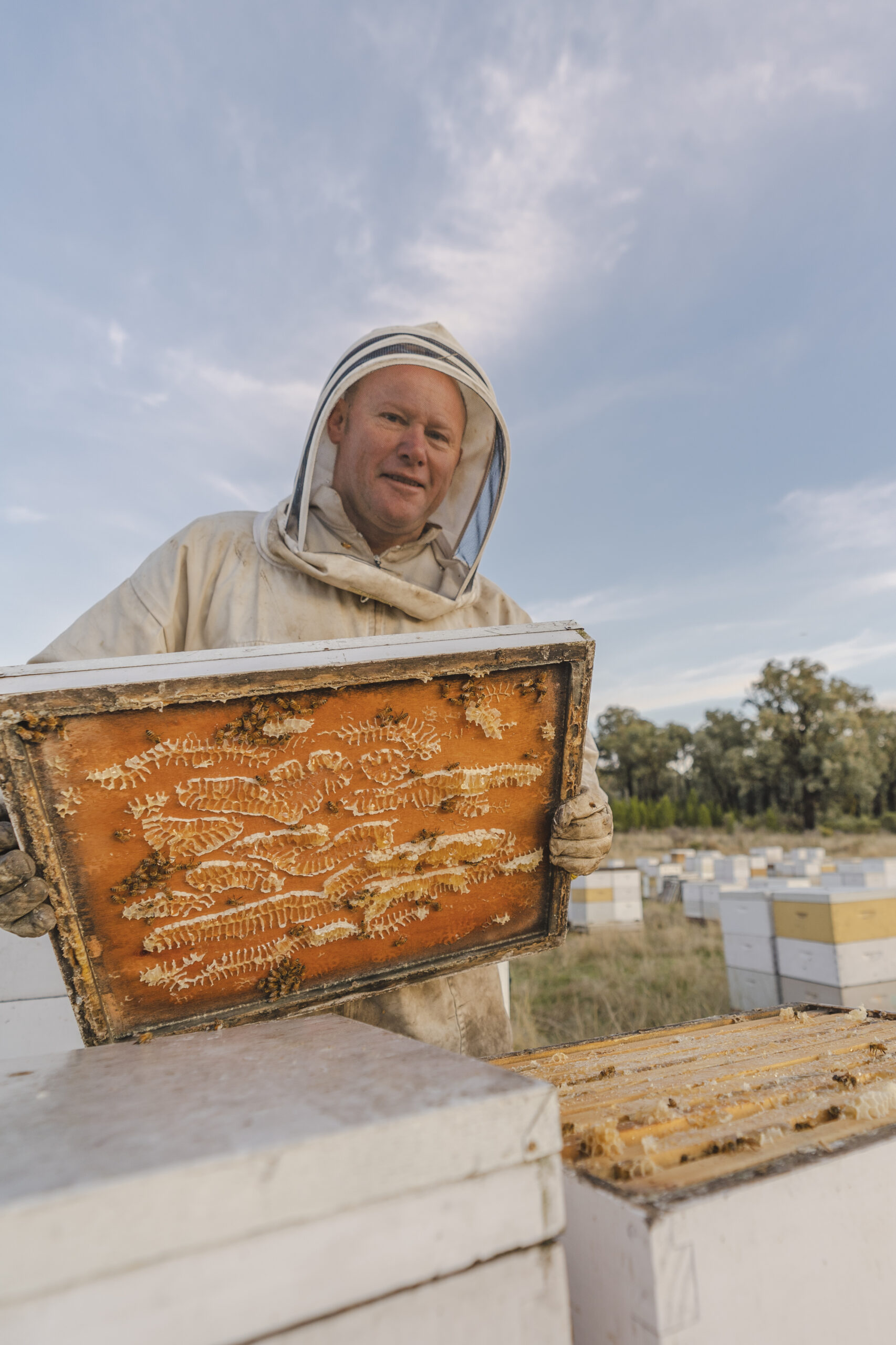
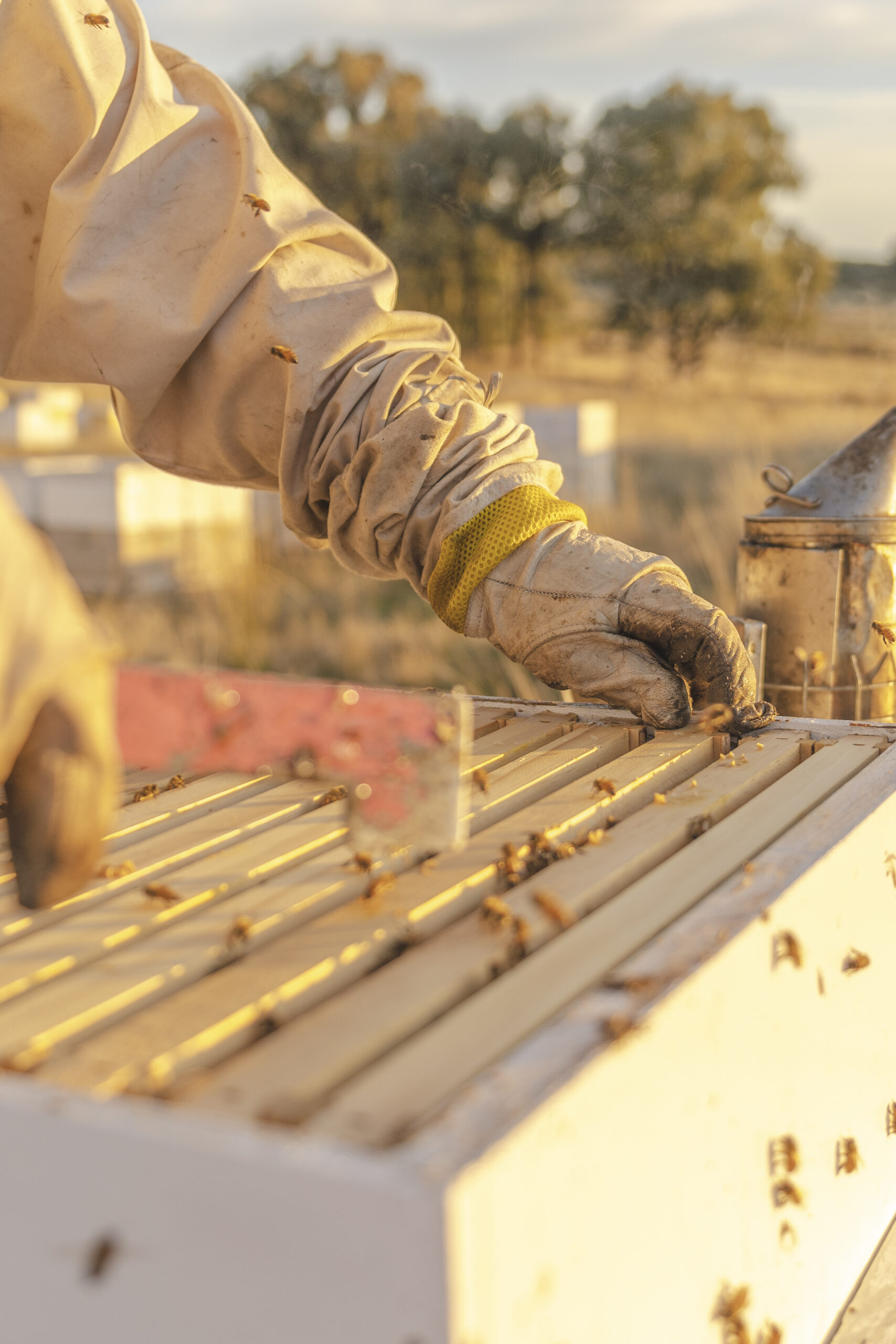
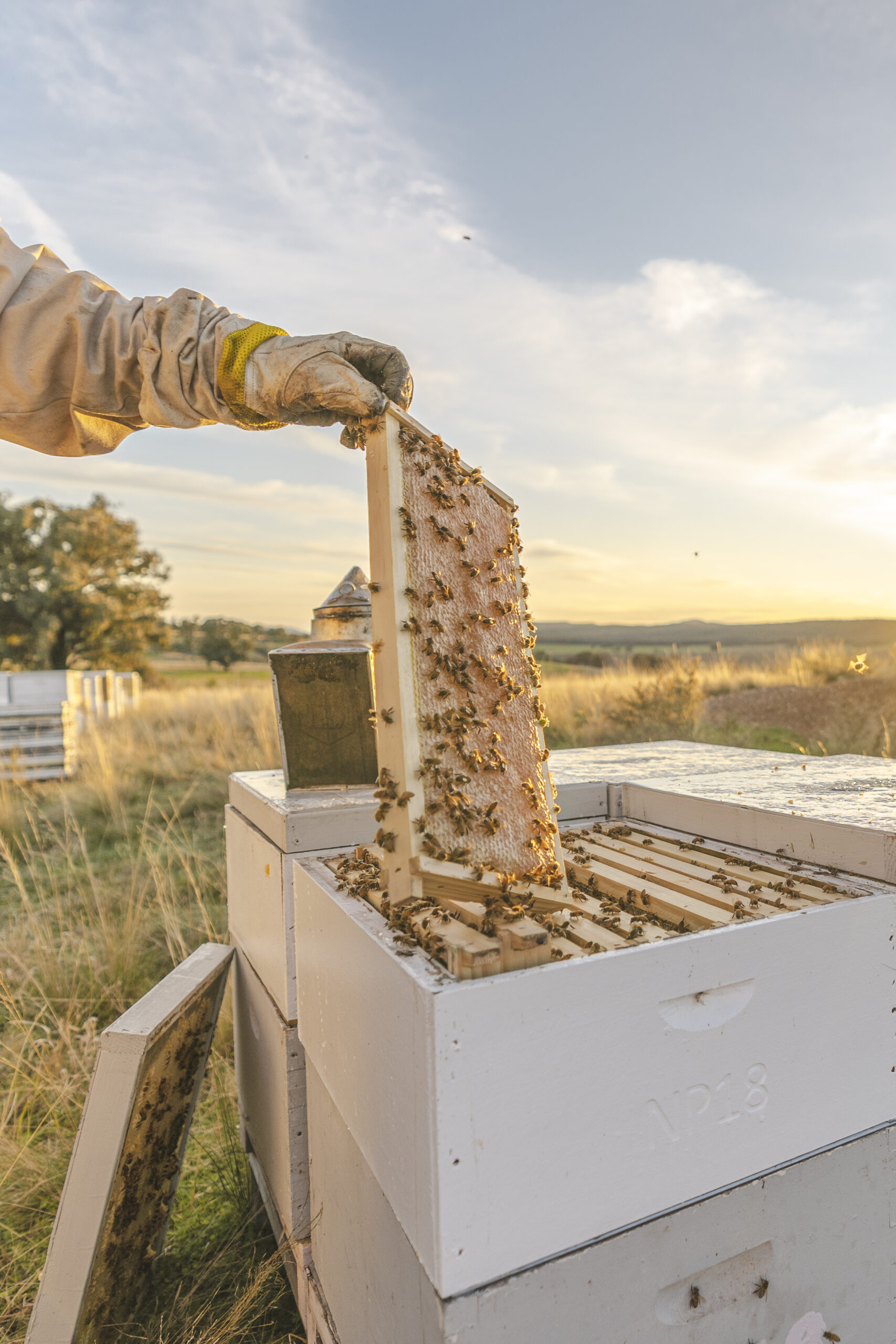
Six months have passed since I photographed Rob in ironbark paddock. It’s now October, and as I sit talking to him over the phone one Tuesday morning, we’ve just had another inch of rain fall overnight. As we move towards the summer months, we’re in the time when honey production is at its height. Trees have just finished blossoming, the canola is blooming, the weeds are rampant and gardens are flourishing with lavender, rosemary and budding roses. But Rob is cautious. There’ll be instances where roads to his beehives are inaccessible due to flooding or potential bogging, the honey will take longer to ripen because of moisture in the air and his bees will be slow to get moving.
“I’m certainly concerned about the season ahead. But I’ve just got to take it as it goes,” Rob says. “Honey production will most certainly be down and the outbreak of varroa mite will still be an issue.
“(But) I won’t give up on my business or my bees. I love them. I feel at home when I’m with them.” And this is what life as a producer is all about. Working with the seasons and as one with the land. And so long as there are people like my husband and me who welcome Rob and his bees to access the flora on our land, Rob is a happy man.
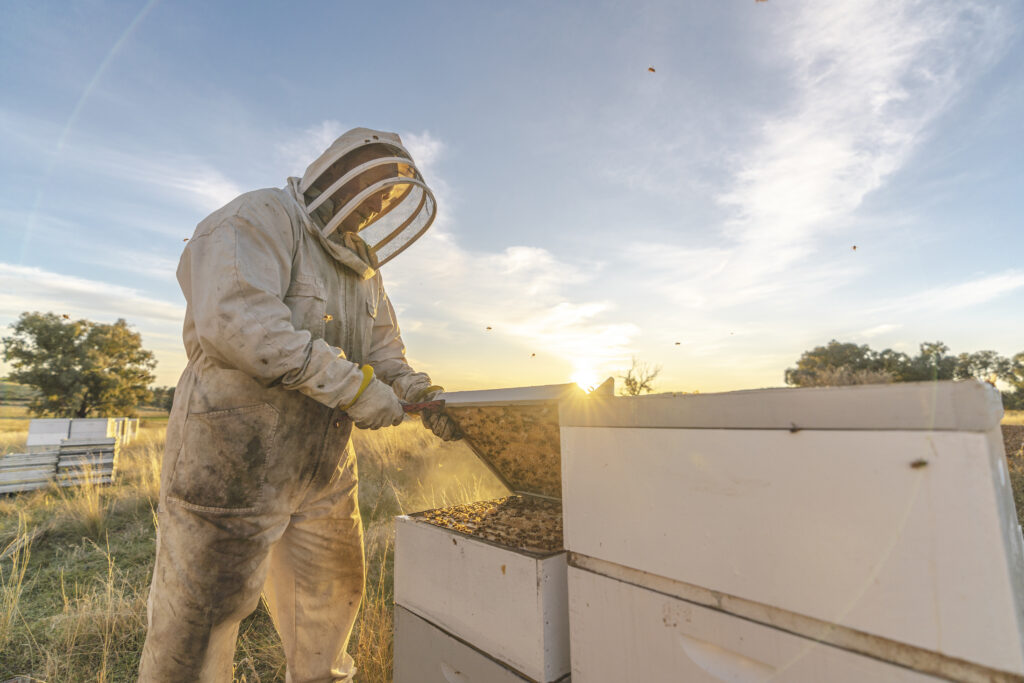
Sign up below to receive random newsletter mailouts when I can find the time, when I have new prints for sale, or in case Instagram shuts down and this is my only way to communicate with you in the future.

Info
It can be a little overwhelming taking the deep dive into marketing and communications. Let's talk over the phone or over a cup of coffee and see how we can work together to get your marketing strategy up and running.
© The Social Herd | Privacy Policy | Terms and Conditions | Shipping & Returns
